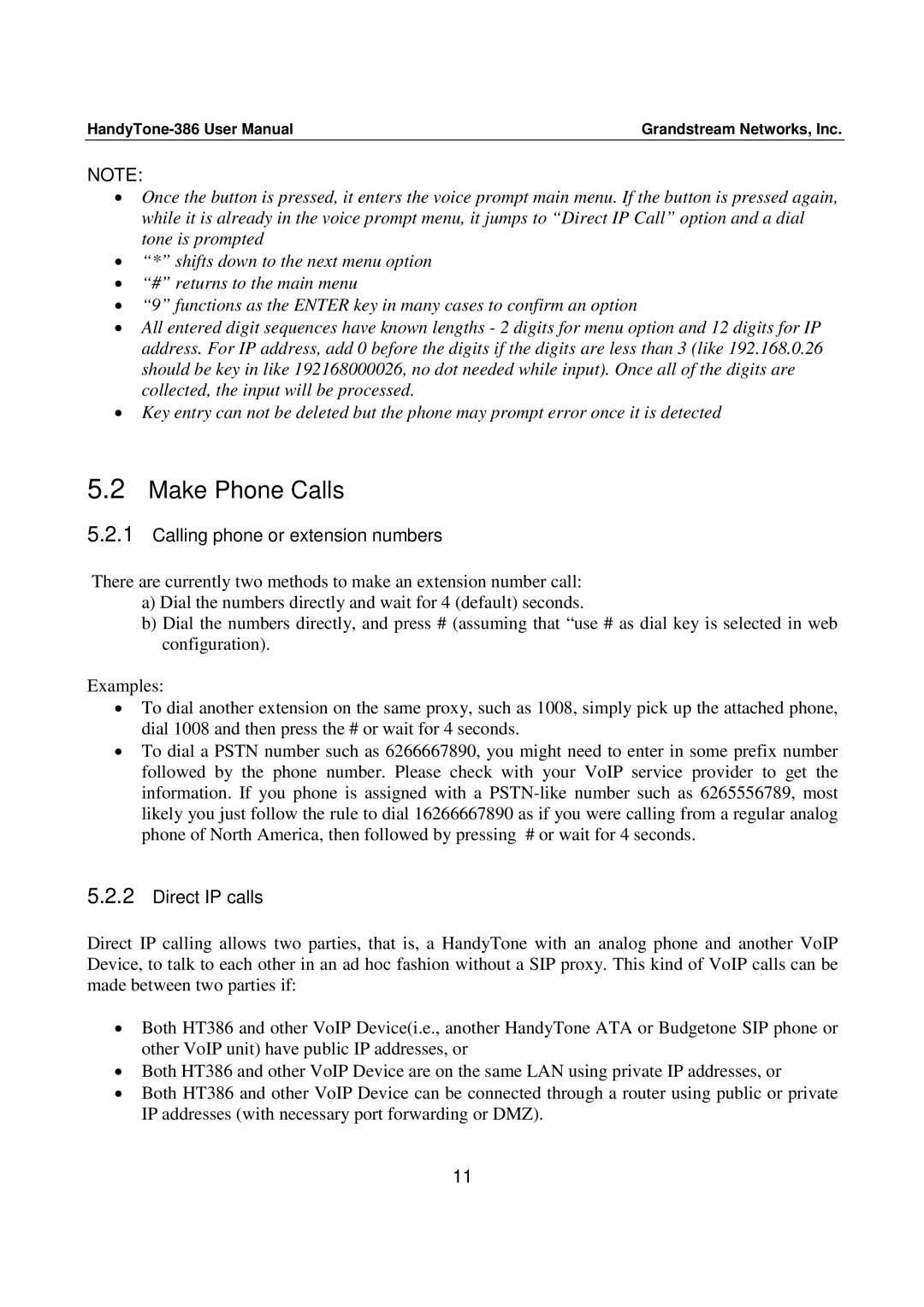Grandstream Networks, Inc. |
NOTE:
•Once the button is pressed, it enters the voice prompt main menu. If the button is pressed again, while it is already in the voice prompt menu, it jumps to “Direct IP Call” option and a dial tone is prompted
•“*” shifts down to the next menu option
•“#” returns to the main menu
•“9” functions as the ENTER key in many cases to confirm an option
•All entered digit sequences have known lengths - 2 digits for menu option and 12 digits for IP address. For IP address, add 0 before the digits if the digits are less than 3 (like 192.168.0.26 should be key in like 192168000026, no dot needed while input). Once all of the digits are collected, the input will be processed.
•Key entry can not be deleted but the phone may prompt error once it is detected
5.2Make Phone Calls
5.2.1Calling phone or extension numbers
There are currently two methods to make an extension number call:
a)Dial the numbers directly and wait for 4 (default) seconds.
b)Dial the numbers directly, and press # (assuming that “use # as dial key is selected in web configuration).
Examples:
•To dial another extension on the same proxy, such as 1008, simply pick up the attached phone, dial 1008 and then press the # or wait for 4 seconds.
•To dial a PSTN number such as 6266667890, you might need to enter in some prefix number followed by the phone number. Please check with your VoIP service provider to get the information. If you phone is assigned with a
5.2.2Direct IP calls
Direct IP calling allows two parties, that is, a HandyTone with an analog phone and another VoIP Device, to talk to each other in an ad hoc fashion without a SIP proxy. This kind of VoIP calls can be made between two parties if:
•Both HT386 and other VoIP Device(i.e., another HandyTone ATA or Budgetone SIP phone or other VoIP unit) have public IP addresses, or
•Both HT386 and other VoIP Device are on the same LAN using private IP addresses, or
•Both HT386 and other VoIP Device can be connected through a router using public or private IP addresses (with necessary port forwarding or DMZ).
11
